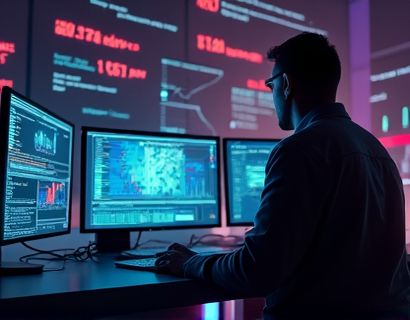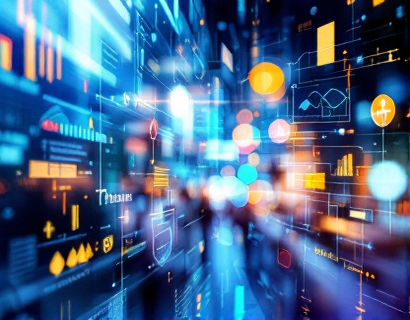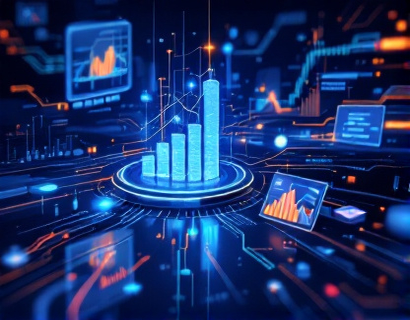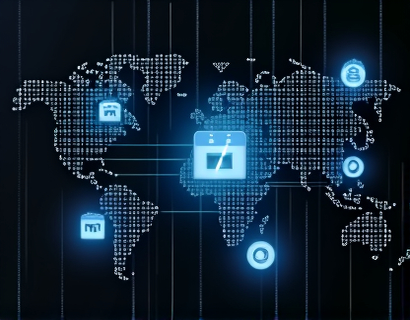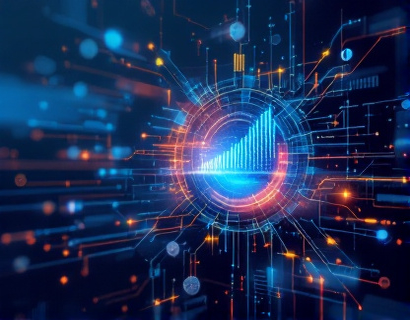Blockchain-Driven Asset Tokenization: Revolutionizing Market Accessibility and Liquidity for Real-World Assets
Blockchain technology has emerged as a transformative force in the financial and asset management sectors, offering unprecedented opportunities for the tokenization of real-world assets. This innovative approach not only enhances liquidity and market accessibility but also integrates physical assets into the digital ecosystem in a secure and transparent manner. By leveraging blockchain, asset holders and investors can unlock new possibilities, streamline transactions, and expand their market presence, all within a trustworthy environment.
The concept of asset tokenization involves converting tangible assets such as real estate, art, infrastructure, and even intangible assets like intellectual property into digital tokens on a blockchain. These tokens represent fractional ownership or rights to the underlying asset, making it possible for a broader range of investors to participate in markets that were previously accessible only to a select few. This democratization of access is one of the most significant benefits of blockchain-driven asset tokenization.
Enhancing Liquidity through Tokenization
One of the primary challenges in the traditional asset market is the lack of liquidity. Real-world assets are often illiquid, meaning they cannot be easily bought or sold without significantly impacting their price. Tokenization addresses this issue by breaking down assets into smaller, tradable units. These digital tokens can be bought and sold on blockchain-based platforms, similar to stocks or cryptocurrencies, thus providing much-needed liquidity.
For instance, a piece of commercial real estate valued at millions of dollars can be tokenized into thousands or even millions of smaller tokens. Each token represents a fraction of the property's value, allowing multiple investors to purchase and trade these tokens with minimal transaction costs and without the need for intermediaries. This process not only increases the efficiency of the market but also attracts a more diverse investor base, including retail investors who might not have the capital to invest in large-scale assets directly.
Improving Market Accessibility
Blockchain-driven asset tokenization significantly improves market accessibility by lowering the barriers to entry. Traditionally, investing in real-world assets required substantial capital, legal expertise, and often, connections within the industry. Tokenization simplifies this process by allowing anyone with an internet connection to participate. The transparency and accessibility of blockchain technology ensure that all transactions are recorded on a public ledger, reducing the risk of fraud and increasing trust among participants.
Moreover, the global nature of blockchain means that investors from around the world can access these tokenized assets without the constraints of geographical boundaries. This global reach not only broadens the investor base but also increases the overall market size, leading to more robust and dynamic markets.
Ensuring Security and Transparency
Security and transparency are paramount in any financial transaction, and blockchain technology excels in both areas. The decentralized and immutable nature of blockchain ensures that once a transaction is recorded, it cannot be altered or deleted. This immutability provides a high level of security, protecting against fraudulent activities and ensuring the integrity of the asset ownership records.
Transparency is another key feature of blockchain. All transactions are visible to all participants in the network, which means that the history of an asset, from its origin to its current ownership, is fully traceable. This level of transparency builds trust among investors and reduces the need for intermediaries such as banks and legal firms to verify transactions, further reducing costs and increasing efficiency.
Use Cases of Asset Tokenization
The applications of asset tokenization are vast and varied, spanning multiple industries. Here are some notable use cases:
- Real Estate: Tokenization of property interests allows for fractional ownership, making real estate more accessible to a wider audience. It also enables easier trading and management of property portfolios.
- Art and Collectibles: Digital tokens can represent ownership of physical art pieces or rare collectibles, ensuring authenticity and provenance while allowing for easier transfer and verification.
- Infrastructure: Tokenizing infrastructure projects can attract more investors and improve funding for large-scale projects, while also enabling better management and maintenance through smart contracts.
- Intellectual Property: Creators can tokenize their intellectual property rights, such as patents, copyrights, and trademarks, facilitating licensing and royalties in a more efficient and transparent manner.
- Supply Chain: Tokenization can enhance supply chain transparency and efficiency by tracking the ownership and movement of goods in real-time, reducing fraud and improving inventory management.
Challenges and Considerations
Despite the numerous benefits, asset tokenization also faces several challenges that need to be addressed:
First, regulatory uncertainty remains a significant hurdle. Different jurisdictions have varying regulations regarding the tokenization of assets, and a lack of clear guidelines can hinder adoption. Collaboration between regulators and the blockchain community is essential to create a conducive environment for innovation.
Second, technical challenges such as scalability and interoperability need to be overcome. As the number of tokenized assets grows, blockchain networks must be able to handle the increased load efficiently. Additionally, different blockchain platforms need to work together seamlessly to facilitate cross-chain transactions.
Third, user education is crucial. Many potential investors and asset holders may not fully understand blockchain technology and its applications. Providing comprehensive educational resources and support can help bridge this knowledge gap and encourage wider adoption.
Future Prospects
The future of asset tokenization looks promising, with ongoing developments in blockchain technology addressing current challenges and opening new possibilities. As more institutions and industries embrace this innovation, we can expect to see a more integrated and efficient global market for real-world assets.
One exciting development is the integration of blockchain with other emerging technologies such as the Internet of Things (IoT) and artificial intelligence (AI). IoT can provide real-time data for asset management, while AI can enhance decision-making processes and risk assessment. These synergies will further enhance the value and utility of tokenized assets.
In conclusion, blockchain-driven asset tokenization is revolutionizing the way we think about and manage real-world assets. By enhancing liquidity, improving market accessibility, ensuring security and transparency, and opening up new use cases, this technology is set to transform the financial and asset management landscapes. As the ecosystem continues to evolve, the potential for innovation and growth remains vast, offering exciting opportunities for all stakeholders involved.








